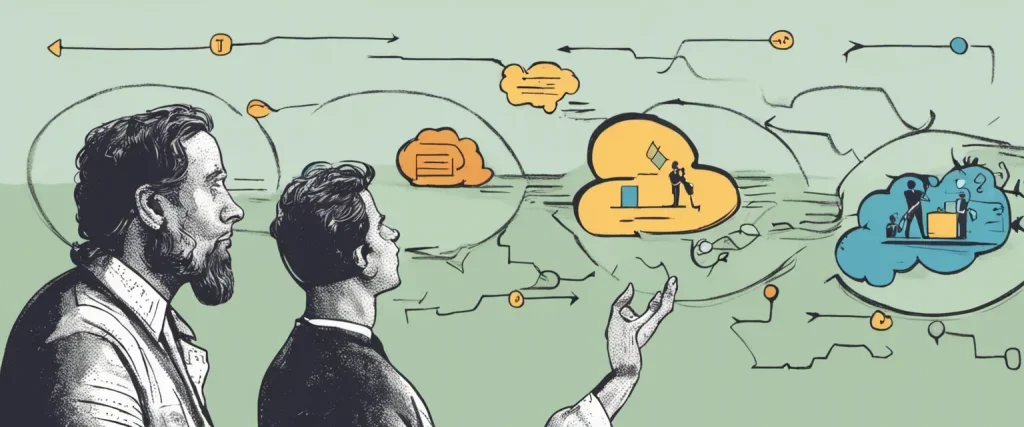In “The Tapping Solution,” Nick Ortner provides a powerful and alternative approach to healing and self-discovery. By combining ancient Chinese acupressure technique with modern psychology, Ortner introduces readers to Emotional Freedom Techniques (EFT) or tapping. Through tapping, individuals can release negative emotions, reduce stress, and achieve profound personal transformation. As the CEO of The Tapping Solution, Nick Ortner has dedicated his life to spreading the benefits of this technique worldwide. With his innate passion, Ortner has become a leading expert in the field of tapping, helping countless individuals overcome adversity and unlock their true potential.
Chapter 1: Introduction to Tapping
Chapter 1: Introduction to Tapping from the book The Tapping Solution by Nick Ortner provides an overview of the revolutionary technique known as “tapping” or Emotional Freedom Technique (EFT). Ortner begins by sharing his personal experiences with tapping and the profound impact it had on his life. He introduces the concept of energy meridians, explaining how these pathways correspond to various emotions and physical sensations.
The chapter delves into the origins of tapping, tracing it back to ancient Chinese medicine and the principles of acupuncture. Ortner simplifies the process by explaining that instead of using needles, tapping on specific points of the body while focusing on emotional issues can help to balance the energy flow and alleviate negative emotions.
The author then highlights some of the scientifically proven benefits of tapping. Research has shown that tapping can reduce stress and anxiety, alleviate physical pain, and even improve the effectiveness of traditional therapy. Ortner also discusses the concept of neuroplasticity, explaining that tapping can retrain the brain to respond differently to negative stimuli and break free from old patterns.
Moreover, Ortner emphasizes the accessibility of tapping as a self-help tool. Anyone can learn how to tap, and the practice requires no special equipment or training. He also stresses the importance of setting goals and keeping an open mind when starting this technique.
In conclusion, Chapter 1 provides an engaging introduction to tapping, laying the groundwork for the rest of the book. Ortner’s personal anecdotes, scientific evidence, and practical advice make a strong case for the effectiveness and simplicity of this innovative tool for emotional healing.
Chapter 2: Understanding the Energy System
Chapter 2 of “The Tapping Solution” by Nick Ortner delves into understanding the energy system and how it relates to tapping, a powerful healing technique. The chapter provides a comprehensive overview of the energy system, its components, and how tapping can positively impact it.
Ortner begins by explaining the concept of energy meridians, the ancient Chinese traditional medicine channels through which energy flows in the body. He introduces the reader to the central meridian, governing meridian, and specific tapping points located on these meridians. These points are important as they act as entry points to restore the flow of energy and release any disruptions or blockages.
Further, Ortner highlights the connection between the mind and body, emphasizing the impact of thoughts and emotions on the energy system. Negative thoughts and emotions can create energetic disruptions within the system, leading to physical and emotional ailments. This is where tapping comes in; by physically tapping on these points, individuals can restore the natural flow of energy, alleviate negative emotions, and promote overall healing.
Additionally, the chapter explores the body’s stress response and how it influences the energy system. Ortner explains the fight-or-flight response, in which the body releases stress hormones that trigger physical and emotional reactions. He demonstrates how tapping can help reduce anxiety, stress, and overwhelm, recalibrating the stress response and restoring energetic balance.
Overall, Chapter 2 of “The Tapping Solution” provides an insightful understanding of the energy system and its role in our well-being. Ortner effectively highlights how tapping can address energy disruptions, release negative emotions, and promote healing and balance. By tapping into this knowledge and applying the techniques outlined, individuals can achieve profound physical and emotional transformation.
Chapter 3: The Power of Thoughts and Beliefs
Chapter 3: The Power of Thoughts and Beliefs explores the profound influence that our thoughts and beliefs have on our lives, as explained by Nick Ortner in his book, The Tapping Solution. Ortner emphasizes that the way we perceive the world and ourselves determines our reality and shapes our experiences.
The chapter begins by highlighting the concept of the “Placebo Effect,” where people experience healing or improvement simply because they believe in the power of a treatment. Ortner argues that this shows how our thoughts and beliefs can manifest physical changes within us, whether positive or negative. By recognizing this power, Ortner encourages readers to tap into their ability to change their thoughts and beliefs in order to improve their well-being.
Ortner then explores the impact of negative thoughts and beliefs on our lives. He explains how negative thoughts can lead to stress, anxiety, and physical ailments. These beliefs can form limitations and prevent us from reaching our full potential. However, Ortner offers hope, stating that by using tapping, a therapeutic technique that involves gently tapping on specific acupressure points, we can release these negative thought patterns and replace them with positive ones.
Furthermore, the author delves into how our beliefs about our past and our identity shape our present and future. He emphasizes the importance of examining and challenging limiting beliefs and shifting towards empowering ones that support personal growth and happiness. Ortner explains that through tapping, we can uncover and release these limiting beliefs, allowing us to create a new narrative and transform our lives.
In summary, Chapter 3 explores the transformative power of thoughts and beliefs. It emphasizes how our perceptions and beliefs shape our reality and influence our physical and emotional well-being. Ortner provides insights on how tapping can be used to release negative thought patterns and limiting beliefs, allowing us to create the positive changes we wish to see in our lives.
Chapter 4: Identifying and Addressing Emotional Issues

Chapter 4: Identifying and Addressing Emotional Issues of the book “The Tapping Solution” by Nick Ortner delves into the importance of understanding and addressing emotional issues through the technique of tapping.
The chapter highlights the significance of emotions and how they can impact our daily lives and overall well-being. Emotions are not just fleeting feelings; they can become stored in our bodies, affecting us physically, mentally, and emotionally. These stored emotions often manifest as stress, anxiety, fears, and even physical ailments.
Ortner introduces the concept of Emotional Freedom Techniques (EFT) or tapping, which is a simple yet powerful tool to address these emotional issues. Tapping involves gentle tapping on specific acupressure points while focusing on the emotional issue at hand. This technique helps release the energy blockages associated with emotional distress.
The author emphasizes the importance of accurately identifying emotions and finding their root causes. He provides guidance on how to identify emotional issues and the possible sources behind them. By understanding the underlying emotions driving our stress or anxiety, we gain insight into how to address them effectively.
Ortner also explores the connection between physical pain and emotions, explaining how unresolved emotional issues can manifest as physical ailments. He shares cases of individuals who have experienced healing and relief from physical pain by addressing the underlying emotional issues through tapping.
Throughout the chapter, Ortner provides numerous tapping scripts and demonstrations to help readers address their emotional issues effectively. He encourages readers to practice tapping regularly to achieve emotional freedom and improve their overall well-being.
In conclusion, Chapter 4 of “The Tapping Solution” highlights the importance of identifying and addressing emotional issues using the technique of tapping. It emphasizes the impact emotions have on our lives and presents tapping as a powerful tool for emotional release and healing. By identifying the root causes of emotional issues and tapping on specific acupressure points, individuals can experience emotional freedom and improved overall health.
Chapter 5: Tapping for Physical Health and Well-being
Chapter 5 of “The Tapping Solution” by Nick Ortner focuses on the use of tapping (also known as Emotional Freedom Techniques or EFT) for physical health and well-being. Ortner begins by emphasizing the strong connection between emotions and physical health, highlighting how stress and negative emotions can manifest in the body as physical symptoms. He describes tapping as a powerful tool that can help release emotional blocks and promote physical healing.
The chapter explores various case studies and examples where people have used tapping to address physical ailments such as chronic pain, allergies, weight gain, and even serious illnesses. Ortner emphasizes the importance of understanding the underlying emotional causes behind these physical issues and how tapping can help resolve them.
According to Ortner, tapping works by stimulating energy points on the body’s meridian system while focusing on specific emotional issues. By tapping on these points and repeating affirmations or statements, individuals can release emotional blocks, reduce stress, and promote healing. Ortner provides step-by-step instructions on how to perform the tapping technique and encourages readers to integrate it into their daily routine.
Throughout the chapter, Ortner provides compelling anecdotes and testimonials of people who have experienced significant improvements in their physical health through tapping. He also discusses the importance of self-care and stress management techniques like mindfulness and meditation as complementary practices to tapping.
Overall, Chapter 5 of “The Tapping Solution” highlights the potential of tapping as a holistic approach to improving physical health and well-being, emphasizing the importance of addressing emotional imbalances for overall wellness.
Chapter 6: Overcoming Limiting Beliefs and Fears
Chapter 6 of “The Tapping Solution” by Nick Ortner focuses on overcoming limiting beliefs and fears using the technique known as tapping, also known as EFT (Emotional Freedom Techniques). This chapter provides a step-by-step process to identify and address the subconscious beliefs and fears that hold people back from achieving their full potential.
Ortner starts by explaining the concept of limiting beliefs and how they shape our thoughts and actions. These beliefs are often formed during childhood and can be influenced by various factors such as societal norms, past experiences, and parental influence. These beliefs create a negative mindset that limits our abilities and prevents us from taking risks or pursuing our goals.
He then introduces tapping as a way to tackle these limiting beliefs and fears. Tapping involves lightly tapping on specific acupressure points on the body while focusing on the limiting belief or fear. This technique helps rewire the brain by sending calming signals to the amygdala, which is responsible for the fight-or-flight response.
Ortner describes a scenario where a woman named Jessica uses tapping to overcome her social anxiety. He guides readers through the process, breaking it down into four steps: naming the limiting belief or fear, rating the intensity of the belief, tapping on the acupressure points while repeating specific phrases, and reevaluating the intensity of the belief.
Throughout this chapter, Ortner emphasizes the importance of persistence and consistency in using tapping to overcome limiting beliefs and fears. He shares success stories from his own experience and provides additional resources for readers to further explore this technique.
In summary, chapter 6 of “The Tapping Solution” focuses on the use of tapping as a tool to address and overcome limiting beliefs and fears. Ortner provides practical guidance, real-life examples, and resources to help readers apply this technique in their own lives, ultimately empowering them to break free from their limiting mindset and achieve their desired goals.
Chapter 7: Tapping for Success and Abundance
Chapter 7 of “The Tapping Solution” by Nick Ortner is titled “Tapping for Success and Abundance.” This chapter focuses on using tapping, also known as Emotional Freedom Techniques (EFT), to overcome limiting beliefs and blocks that hinder success and abundance in various areas of life.
Ortner starts by discussing the influence of beliefs on our ability to achieve success and abundance. He emphasizes that our subconscious beliefs determine our actions, and if there are negative beliefs relating to money, worthiness, or success, they will hold us back. Tapping is presented as a powerful tool to release these limiting beliefs and create new empowering ones.
The chapter then delves into specific topics related to success and abundance where tapping can be applied. Ortner explores money blocks and scarcity mindset, providing tapping scripts to help individuals identify and shift their beliefs surrounding these areas. He emphasizes the importance of addressing any emotional charges or traumas that may be connected to money in order to fully release these blocks.
Ortner also addresses the fear of success, acknowledging that it may seem counterintuitive but can be a significant obstacle. Through tapping exercises and anecdotes, he guides the reader towards releasing fear and resistance around achieving success and stepping into their full potential.
Additionally, the chapter touches upon tapping for abundance in relationships and career. Ortner provides practical guidance on tapping to enhance self-confidence, overcome self-doubt, and attract positive opportunities.
Overall, Chapter 7 of “The Tapping Solution” explores various aspects of success and abundance where tapping can be utilized to release limiting beliefs and promote positive change. By addressing the subconscious factors that hinder progress, individuals are empowered to tap into their full potential and create a life filled with success and abundance.

Chapter 8: Putting It All Together: Creating a Tapping Practice
Chapter 8 of “The Tapping Solution” by Nick Ortner, titled “Putting It All Together: Creating a Tapping Practice,” focuses on integrating the knowledge gained throughout the book into a structured tapping routine that readers can practice regularly. The chapter emphasizes the importance of creating a consistent tapping practice to reap the maximum benefits of Emotional Freedom Techniques (EFT).
Ortner explains that the tapping practice should begin with identifying specific issues or emotions to address, such as stress, anxiety, pain, or limiting beliefs. He suggests creating a list of these issues and ranking them based on their intensity to prioritize the tapping practice. This list can be revisited and revised as progress is made.
The chapter provides a step-by-step guide to conducting a tapping session, starting with the setup statement and reminder phrase to focus on the problem. Ortner encourages readers to tap while expressing their feelings and thoughts associated with the issue. He advises incorporating deep breaths and self-compassion during the tapping process.
Furthermore, Ortner discusses the concept of borrowing benefits in EFT, which involves tapping on the issues of others. He believes that tapping along with someone else’s experience can yield positive outcomes for oneself as well.
The chapter concludes by emphasizing the importance of regular practice for lasting results. Ortner suggests setting aside designated times to tap and integrating it into daily or weekly routines.
In summary, Chapter 8 of “The Tapping Solution” guides readers in creating a structured tapping practice. It provides steps for identifying and addressing specific issues, using setup statements and reminder phrases, incorporating self-compassion, and borrowing benefits from others’ experiences. The chapter emphasizes the significance of consistency in order to maximize the benefits of Emotional Freedom Techniques.
After Reading
In conclusion, “The Tapping Solution” by Nick Ortner is an insightful and practical guide to the technique of Emotional Freedom Techniques (EFT), also known as tapping. Ortner skillfully explains the science behind tapping and provides step-by-step instructions for using this powerful tool to address a wide range of emotional and physical issues. Throughout the book, Ortner combines personal anecdotes, case studies, and scientific research to demonstrate the effectiveness of tapping in relieving stress, anxiety, pain, and trauma. By empowering readers to take control of their own healing journeys, Ortner offers a compelling argument for the transformative potential of EFT in achieving emotional well-being and overall health. Whether you are a beginner or already familiar with tapping, “The Tapping Solution” serves as an invaluable resource for anyone seeking a natural and holistic approach to healing and personal growth.
1. The Power of Now” by Eckhart Tolle:
– Summary: This profound spiritual guide explores the concept of living in the present moment and freeing oneself from the limitations of the mind.
– Why you’ll love it: Tolle’s teachings offer practical tools and insights to help you embrace mindfulness, find inner peace, and experience a deeper connection with the world around you.
2. The Art of Seduction” by Robert Greene:
– Summary: A thought-provoking and controversial book that delves into the strategies and dynamics of seduction, highlighting historical examples to illustrate human behavior and attraction.
– Why you’ll love it: Greene’s exploration of human nature, psychology, and social dynamics offers a fresh perspective on relationships, communication, and self-awareness.
3. Reasons to Stay Alive” by Matt Haig:
– Summary: Based on the author’s personal experience, this memoir delves into Haig’s battle with depression and anxiety, providing a heartfelt account of his journey to find hope and recovery.
– Why you’ll love it: Haig’s book is a compassionate companion for anyone navigating their own mental health challenges, offering valuable insights, coping strategies, and an understanding that you are not alone.
4. The Four Agreements” by Don Miguel Ruiz:
– Summary: This spiritual guide outlines four principles that can transform your life by promoting personal freedom, self-love, and authentic happiness.
– Why you’ll love it: Ruiz shares ancient Toltec wisdom in a concise and powerful way, emphasizing the importance of integrity, self-acceptance, and conscious communication to create a more fulfilling existence.
5. Man’s Search for Meaning” by Viktor E. Frankl:
– Summary: In this timeless classic, Frankl, a psychiatrist and Holocaust survivor, explores the human pursuit of meaning and purpose, drawing from his experiences in Nazi concentration camps.
– Why you’ll love it: Frankl’s profound reflections on suffering, resilience, and the search for meaning offer a transformative perspective on how one can find purpose and fulfillment even in life’s darkest moments.
These five books provide a powerful combination of spiritual, psychological, and philosophical insights, inviting readers to embark on a journey of personal growth, self-discovery, and inner transformation. Whether you’re seeking mindfulness, improved relationships, resilience, or a deeper understanding of your own existence, these books will inspire and guide you along the way.



